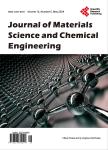Enhancement of the Electromagnetic Wave Shielding Effectiveness by Geometry-Controlled Carbon Coils
Enhancement of the Electromagnetic Wave Shielding Effectiveness by Geometry-Controlled Carbon Coils作者机构:Center for Green Fusion Technology and Department of Engineering in Energy & Applied Chemistry Silla University Busan 617-736 Republic of Korea Onnuri International Christian Academy Yangsan Kyungnam 626-813 Republic of Korea
出 版 物:《Journal of Materials Science and Chemical Engineering》 (材料科学与化学工程(英文))
年 卷 期:2015年第3卷第1期
页 面:37-44页
学科分类:1002[医学-临床医学] 100214[医学-肿瘤学] 10[医学]
主 题:Carbon Coils Electromagnetic Wave Interference Shielding Effectiveness Absorption Mechanism
摘 要:Carbon microcoils were deposited onto Al2O3 substrates using C2H2/H2 as source gases and SF6 as an incorporated additive gas in a thermal chemical vapor deposition system. At as-grown state, the carbon coils (d-CCs) show the diverse geometry. The geometry-controlled carbon microcoils (g-CMCs) could be obtained by manipulating the injection time of SF6 in C2H2 source gas. The d-CCs with polyurethane (PU) composite (d-CC@PU) and the g-CMCs with PU composite (g-CMC@PU) were obtained by dispersing d-CCs and g-CMCs in PU, respectively. The electromagnetic wave shielding properties of d-CC@PU and g-CMC@PU composites were investigated in the frequency range of 0.25 - 4.0 GHz. The shielding effectiveness (SE) of d-CC@PU and g-CMC@PU composites were measured and discussed according to the weight percent of d-CCs and g-CMCs in the composites with the thickness of the composites layers. On the whole frequency range in this work, the SE of g-CMC@PU composites was higher than those of d-CC@PU composites, irrespective of the weight percent of carbon coils in the composites and the layer thickness. Furthermore, we confirmed that the absorption mechanism, instead of the reflection mechanism, seemed to play the critical role to shield the EMI for not only the g-CMC@PU composites but also the d-CC@PU composites.



